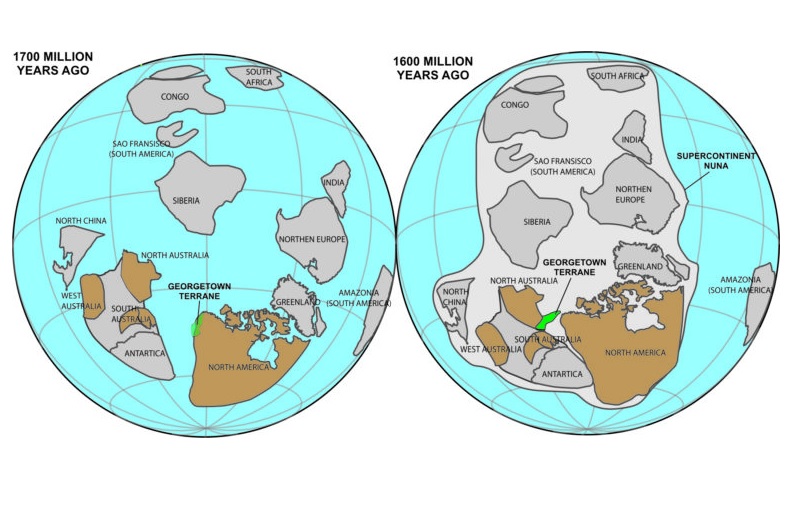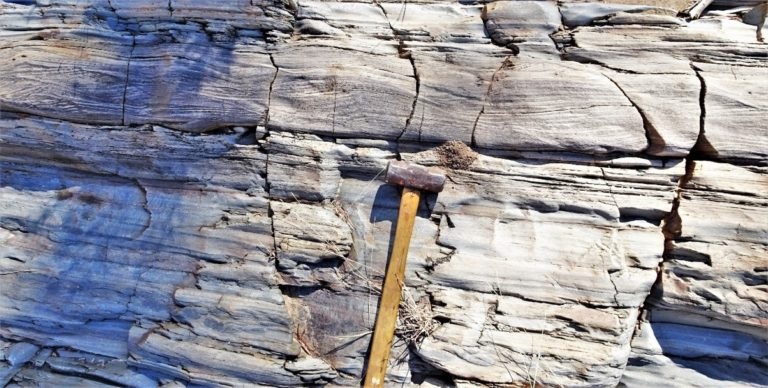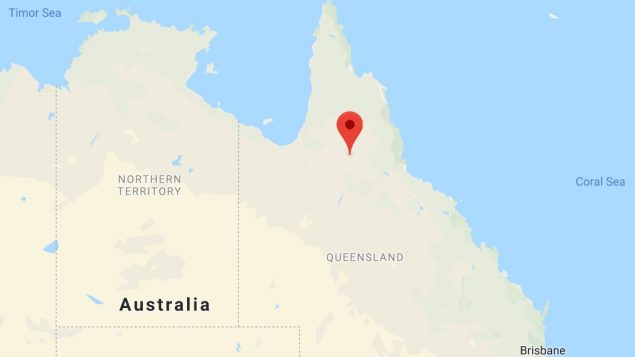Canada and Australia are literally half a world apart. A new study however says that wasn’t always the case.
A new research paper shows that a portion of Australia once belonged to what is now Canada. The paper was published in the journal Geology under the title. Laurentian crust in northeast Australia: Implications for the assembly of the supercontinent Nuna. (abstract HERE)

Illustrations showing that the Georgetown terrane of present-day northern Queensland was originally part of North America some 1700 million years ago. It then joined Australia at around 1600 million years ago during the formation of the supercontinent Nuna, and has remained part of Australia since. IMAGE: A. Nordsvan et all Curtin University
The phenomenon of continental drift has long been known, meaning that entire continents are floating around the Earth’s surface on the molten core like flotsam on a a lake. The rate of movement however is miniscule. Still, over the course of millions of years, the movement has been dramatic,
Geologists know that there have been at least a couple of “supercontinents” over the approximately 4 billion years of Earth history where giant landmasses were formed and later split up into smaller continents.
Pangea was the last so-called supercontinent which began to split up about 175 million years ago.
Now a new study has found that about 1.6 billion years ago, Australia and Canada were closely connected in a supercontinent known as Nuna which existed from 2.5 to 1.5 billion years ago.
The finding came to light after studying unusual rocks in northern Australia not found anywhere else in that continent, but which are closely related to rock formations in what is now Canada.

Current ripple laminations in fine to medium grained sandstone sedimentary rocks in Georgetown indicate ancient shallow marine environments. Our data shows these sediments were deposited off the coast of North America adjacent to present-day Canada, and later transferred to Australia. Photo- Nordsvan et al, Curtin U
The study by Curtin University in Australia, Monash University and the Geological Survey of Queensland indicates that a large chunk of what would become Canada and the Yukon and British Columbia coast, drifted over 100 million years into what would become Australia and when Nuna broke up into smaller continents, the giant chunk stayed with the Australian continent.
While some researchers have long suggested Australia and North America were once connected, the new findings provide the evidence and also dispel the idea that Australia was once connected to Siberia. PhD student Adam Nordsvan, lead author of the paper, said the discovery also provides new information about the Nuna supercontinent
Additional information-sources
- Curtin University; legacy of Nuna
- IFL Science: Tiny Australian town sits on piece of Canada
- Daily Mail (UK) H Pettit: Jan 23/18: Australia connected to Canada
- National Post: J Edmiston: Jan 23/18: Part of Canada found in Australia
- Science Alert: M Starr : Jan 22/19: mounting evidence piece of Australia was once Canada
- Canning Times: J Shurmer: Jan 22/18: Australia part of Canada







For reasons beyond our control, and for an undetermined period of time, our comment section is now closed. However, our social networks remain open to your contributions.